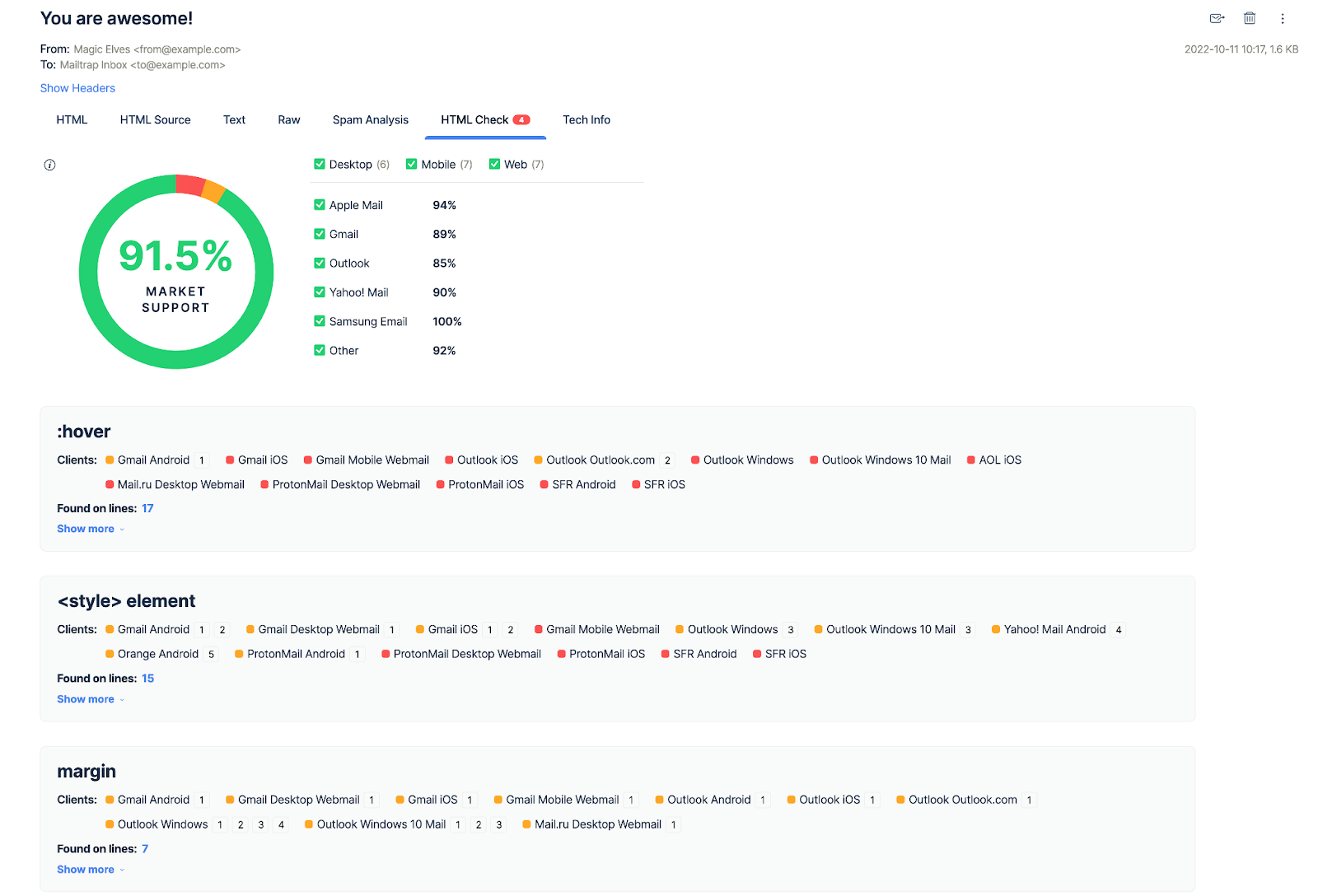Limitations and possible issues
Prior to developing an app that will have an email-sending functionality with PHPMailer via Gmail, it’s important to understand the limitations of both systems to avoid any SMTP errors.
PHPMailer is a great library that reduces web development time and helps you build email sending and other types of notifications functionality but it’s not without its issues.
In the past security vulnerabilities have been found in the library, in particular those that exposed the mail server to malicious attacks via contact forms on a website.
It is important to note that PHPMailer had the vulnerability patched in since it was exposed and released documentation on how to deal with it.
For most projects that are at a starting point, a regular Gmail account is enough. However, Gmail does have its own limitations and at a certain stage, you might need to switch to a service that fits your needs.
- 500 Emails a day (1 recipient is counted as one email)
- 24-hour wait time to resume sending after reaching the threshold
What alternatives are there to PHPMailer and Gmail?
Besides Gmail, the dominant choice for many, there are many other free and affordable email clients on the market. Some of the most comparable to Gmail and its functionality includes:
- Zoho Mail
- Microsoft Outlook
- Apple Mail
- Yahoo! Mail
Other than the default PHP mail() function and the widely popular PHPMailer there are a few more alternatives that let you send mail. Choosing the right method highly depends on the main goal of your project. Additionally, prior to making your pick, it’s important to understand the automation capabilities, documentation, security level, and available support for that alternative. Let’s quickly go through the available options.
An internal email-sending system of the open-source PHP framework, Symfony. The system allows creating and sending emails and comes with CSS inlining, Twig integration, file attachment capabilities, and support for multipart messages. Predominantly important in our context, Symfony Mailer can be directly integrated with the most popular email-sending providers.
A non-framework-dependent straightforward API Wrapper that is easy to integrate into a PHP application. The API wrapper is used in Postmark, SendGrid, MailGun, Mandrill, and many other third-party email-sending services that can be used in your project.
An Email API that allows you to perform quick troubleshooting, and debugging, and prevent sending issues thanks to actionable analytics features. With our Email API/SMTP Relay you can access email logs up to 60 days old, so you can gain greater insight into where your email infrastructure is at.
Mailtrap API integration in your PHP project can be done in a few simple and quick steps:
- Once your domain is set up and verified, from the Sending Domains section go to the API and SMTP tab.
- Choose API in the Integrations window, and PHP from the drop-down menu.
- Copy the API code that will be generated with your credentials and run it.


















